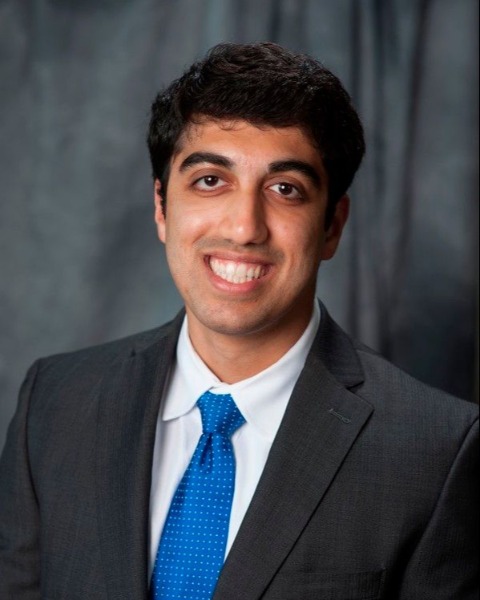Back
Poster, Podium & Video Sessions
Video
V10: Adrenal & Renal Oncology I
V10-05: Utilization of a 3D Model for Rehearsal Tumor Resection Prior to Robot Assisted Laparoscopic Partial Nephrectomy
Sunday, May 15, 2022
4:10 PM – 4:20 PM
Location: Video Abstracts Theater
Pratik Kanabur*, Sagar Patel, Richard E Link, Wesley A Mayer, Houston, TX

Pratik Kanabur, MD, BS
Baylor College of Medicine
Video Presenter(s)
Introduction: Planning complex robotic-assisted laparoscopic partial nephrectomies (RAPN) currently involves synthesizing a mental three-dimensional (3D) representation of tumor anatomy from limited two-dimensional images. Planning complex tumor resections that maximize cancer control and minimize nephron loss can be challenging particularly early in the learning curve. This can be an educational challenge for trainees. RAPN of high complexity tumors is associated with longer warm ischemia times, greater blood loss, renal dysfunction and higher risk of conversion to radical nephrectomy. 3D printing is an increasingly valuable tool for surgical education that affords the ability to visualize and teach complex tumor resections. We utilized an FDA-approved patient-specific 3D printed model to facilitate rehearsals of tumor resection prior to the surgery to improve surgical preparation and perioperative outcomes.
Methods: Patient-specific, cost-effective 3D models of the affected kidney were created using an FDA-approved technology (Prosure, Lazarus 3D) derived from preoperative imaging of two patients undergoing RAPN for complex renal masses. These models are composed of a soft material designed to simulate the tissue properties of kidney parenchyma and contain tumor, collecting system, veins and arteries. The model was placed into anatomical position in a robot training amphitheater and the tumors were resected using the DaVinci XI robotic surgical system first by the resident and then by an experienced attending surgeon. Resection time was documented and video was recorded to facilitate surgical preparation.
Results: The first patient was a 46 year male with a 3.3 cm entirely endophytic left renal mass (nephrometry score = 10p) and the second patient was a 48 year female with a 4.5 cm endophytic hilar right renal mass (nephrometry score = 10ah). The rehearsal tumor resection times were 18 and 14 minutes, and surgical resection times were 14 and 13 minutes, respectively. There were no perioperative complications. Final pathology was pT1a with negative margins for both patients.
Conclusions: This video illustrates the utilization of a patient-specific 3D kidney model to rehearse complex tumor resection prior to the surgery. The implementation of 3D models available to the surgeon prior to RAPN affords preoperative planning and improves the ability to anticipate intricacies of patient-specific anatomy. Moreover, allowing the resident to demonstrate tumor resection capability on a model may increase trainee autonomy and focus teaching during the case.
Source of Funding: None
Methods: Patient-specific, cost-effective 3D models of the affected kidney were created using an FDA-approved technology (Prosure, Lazarus 3D) derived from preoperative imaging of two patients undergoing RAPN for complex renal masses. These models are composed of a soft material designed to simulate the tissue properties of kidney parenchyma and contain tumor, collecting system, veins and arteries. The model was placed into anatomical position in a robot training amphitheater and the tumors were resected using the DaVinci XI robotic surgical system first by the resident and then by an experienced attending surgeon. Resection time was documented and video was recorded to facilitate surgical preparation.
Results: The first patient was a 46 year male with a 3.3 cm entirely endophytic left renal mass (nephrometry score = 10p) and the second patient was a 48 year female with a 4.5 cm endophytic hilar right renal mass (nephrometry score = 10ah). The rehearsal tumor resection times were 18 and 14 minutes, and surgical resection times were 14 and 13 minutes, respectively. There were no perioperative complications. Final pathology was pT1a with negative margins for both patients.
Conclusions: This video illustrates the utilization of a patient-specific 3D kidney model to rehearse complex tumor resection prior to the surgery. The implementation of 3D models available to the surgeon prior to RAPN affords preoperative planning and improves the ability to anticipate intricacies of patient-specific anatomy. Moreover, allowing the resident to demonstrate tumor resection capability on a model may increase trainee autonomy and focus teaching during the case.
Source of Funding: None

.jpg)
.jpg)